Is it worth the extra spend – to the tune of $12,700 – to buy the electric version of Hyundai’s Kona rather than the non-electric version of the same thing?
The question begs several answers, all of them depending on your perspective as much as on your budget.
What It Is
The Kona is a compact-sized, five-door crossover that’s similar in overall size and layout to others in the class, like the Honda HR-V and Mazda CX-30. It differs from them – radically – in being available with either a gas engine or an electric motor.
One that isn’t paired with a gas engine.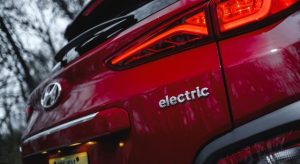
The gas-engined version of the Kona carries an MSRP of $21,300 to start for the SE trim with a 2.0 liter gasoline engine, a CVT automatic transmission and front-wheel-drive. With the optional all-wheel-drive system, the sticker price is $22,800. You can also get the Kona with a smaller – but stronger – 1.6 liter gas engine, paired up with a seven speed dual-clutch automatic transmission, which is designed to deliver faster/snappier shifts behind the higher-performance engine. This one – the Kona N Line – lists for $25,850 with FWD and $27,350 with AWD.
A top-of-the line Kona N (without the Line) has a high-performance turbocharged version of the 2.0 liter engine that’s the strongest of the three available gas engines. This one is also paired with the seven speed automatic and AWD is standard.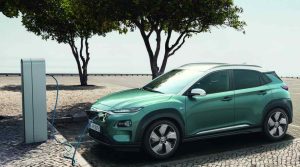
The sticker reads $34,200.
Then there is the electrically-powered Kona. It has no transmission – the one speed electric motor directly driving the front wheels only (AWD is not available with this version of the Kona) and an advertised range on a full charge of 258 miles.
The SEL trim lists $34,000 to start.
There is also a Limited trim – which stickers for $42,500 to start. This one does not come with more range – or a stronger battery – as is often the case with electric cars that are available in a base and higher-cost version. This includes one of the Kona’s rivals, Nissan’s Leaf – which costs less to start ($27,400) but only comes with about 150 miles of range. For more range – 226 miles – you have to pony up $32,400 for a Leaf with the optional/stronger battery pack.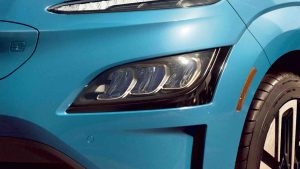
Instead of a stronger battery – in the Kona Limited – you get a battery heater, which improves battery charge longevity in cold weather. Plus leather trim, a sunroof, LED lighting, a Heads-Up Display (HUD) and a larger 10.25 inch LCD touchscreen, among other upgrades.
What’s New
The trim range for the electric Kona has been thinned to two from three. Last year’s Ultimate trim has been nixed and most of its content folded into the Limited trim. There have also been a few minor exterior styling tweaks to give the ’22 a newer/updated look.
What’s Good
No extra cost for more standard range than in rivals like the Leaf.
No loss of cargo or passenger space (for the battery pack) vs. the non-electric Kona.
Extremely responsive acceleration.
What’s Not So Good
258 mile range is much less range than the range of the gas-engined Kona – and it can vary hugely depending on how you drive as well as how cold (or hot) it is outside when you drive.
You’ll save on gas – by not buying any. But you’ll spend $12,700 more on the electric Kona (vs. the gas-engined Kona) . . . which could have bought about six years of gas, even at Let’s Go Brandon prices.
FWD only.
The electric Kona comes standard with a 150 kilowatt-hour electric motor fed electricity by a 64 kilowatt-hour battery pack. The combo generates the electric equivalent of 201 horsepower and 291 ft.-lbs. of torque at zero RPM – because electric motors don’t need to rev in order to build their peak output. The power generated by the electric motor/battery drivetrain is available immediately, which is one of the definite advantages of electric propulsion.
Another – in this case – is that you do not have to spend extra to get more range. To get everyday-viable range.
All electric Konas come standard with the same 258 miles of advertised range. This is much more than the Nissan Leaf’s advertised 150 miles of standard range as well as its optiona/extra-cost 226 miles of advertised range. Assuming it goes as far as advertised, the Kona EV’s range is enough for everyday driving without pushing the limits of its range – and thus potentially forcing you to stop – and wait – before you wanted to. Or have time to.
But why the italics?
They have been added to emphasize the point that – with all EVs – the advertised range can and frequently will vary by as much as 30 percent (or more) depending not just on how you drive – as in hard and fast or gently and slowly – but also on factors cannot control such as heat and cold.
Electric car batteries – like all batteries – lose power as it gets colder. This fact of physics is compounded in the cold because most people like to use the heat when it’s cold – and that draws more power from the battery and so there is less to power the motor that propels the car. In the hot, people like to stay cool – and so they turn on the AC. Which, in an electric car, is also powered by the battery, leaving less energy to power the motor that propels the car.
And so, less range than advertised.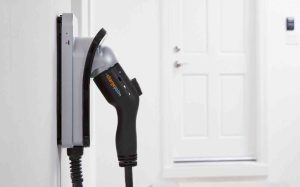
It is true that the use of AC in a gas engined car also results in more energy usage, too – and so less range. But AC doesn’t use as much energy in a gas-engined car and the use of the heater uses no additional energy at all (the heat being a free benefit of the warmth generated by the running engine). Also, the heat – and cold – itself – affects the range of a gas-engined car almost not-at-all. So whatever the advertised range on a full tank is – 396 miles in city driving and 462 miles on the highway, for the gas-engined Kona – it isn’t going to be 30 percent or even 10 percent less than what you actually get.
Another bit of due diligence to consider with any EV is how long it takes to recharge – and where you will recharge. The Kona electric can be recharged at home. But it will take about 9 hours to do that on 240 volt current – which is the most current most private residences are wired for. And even that requires installing a dryer-type outlet within plug-range of the EV, which will be a problem if you haven’t got a garage or live in an apartment.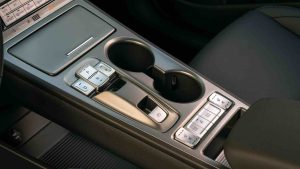
On standard household appliance current – 120V – it will take overnight to recharge your EV.
You can “fast” charge the Kona in under an hour – at a “fast” charger. But these are not at home and that means having to wait wherever the “fast” charger is. And spend the time it takes getting there.
And then back home.
Further – and finally – even at these “fast” chargers, you can generally only recharge to about 80 percent of potential capacity (so as to avoid damaging the battery). This means that your actual range, after a “fast” charge, is only about 206 miles, in the case of an EV like the Kona.
Assuming it’s not very cold – or very hot – outside.
Driving an electric car is unlike driving any other kind of car. And this has its good as well as its bad points.
The good: An electric car like the Kona accelerates with an immediacy that’s uncommon in other cars, even the highest-performance of them. This being a function of the fact that before their engines make power – necessary for acceleration – their engines must spin.
They do not make power at zero RPM.
Electric motors do.
Or rather, they make power – peak power – as soon as they begin to spin. The Kona’s electric motor develops all 291 ft.-lbs. of torque immediately. And for that reason, so is the acceleration. It launches with almost brutal force, if you floor the accelerator pedal (electric cars don’t have gas pedals). It gets to 60 in just over six seconds – which is about three seconds sooner than the non-electric Kona equipped with the 2.0 liter, 147 horsepower gas (not turbocharged) engine takes to get there.
But this is even quicker-feeling than it sounds, because the majority of the acceleration – in the electric Kona – happens as soon as you floor the accelerator from a standstill.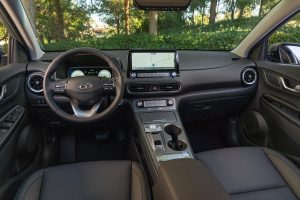
It feels like a V8 muscle car – without the cylinders.
It is similarly responsive the rest of the time, too – which is also a function of the fact that – not having a transmission that has to shift from gear to gear – the motor spins the wheels directly and so more immediately.
And of course, there is no sound. Other than the sound of the tires rolling – and the road and wind. It’s a weird feeling, at first. But then, we’re used to so much noise that having less of it is almost unnatural.
And you’ll never have to stop for – or pay for – gas.
But . . .
Electricity isn’t free – and the cost of electricity is certain to increase as demand for it increases. It is also very likely there will taxes added to the cost, to make up for the ones not being being paid on gas. 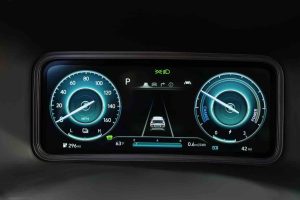
And keep in mind that the Kona electric only goes so far – relative to its non-electric analog.
And it goes less far, if you make use of its power. or use its power, to power other things.
The same is of course true for any car, engined or not. But those with engines can get going again almost immediately because it takes hardly any time to gas them up – almost anywhere. That’s a savings of time if not money, though the two are related. And they go farther because you can gas them up to full rather than just 80 percent – and then having to wait a long time for the remaining 20 percent.
In city (low speed, stop-and-go) traffic, the electric Kona is – like all electric cars – in its element. But its element isn’t the highway, where you can literally watch the charge indicator wilt in the same way that the gas gauge needle slides from F to E in a gas-guzzling muscle car.
But – again – the difference here is that, unlike driving the gas guzzler, when you drive an energy guzzler, you must think carefully about and even plan for stops along the way. And have the time to spend where you stop – because you’ll be there for awhile.
This of course isn’t necessarily an issue if you drive your Kona electric well within the nimbus of its actual range, as will be the case most of the time, if you mostly drive in the “city” and rarely need to drive farther than say 150 or so miles in a day. In that case, you can also realistically recharge at home – where spending a lot of time waiting isn’t an inconvenience, especially if it’s overnight, while you’re sleeping. But if you need a car that’s ready to go whenever you are – and that can go anywhere without you having to wait for it – then you might want to think carefully about buying the Kona EV.
At The Curb
There is very little visual difference between the electric Kona and the gas-engined Kona – except for its grill. It hasn’t got one. Because, of course, it doesn’t need one. Gas engined cars do because they have radiators ahead of their engines, to dissipate the heat of combustion via coolant passing through the radiator. Air flows through the grill – and through the radiator – taking the heat of combustion away with it.
The gas-engined Kona has a grill, for just that reason. Out of necessity. The Kona electric has a solid face, also for that reason. And for another. The lack of a big, open grill means air flows around the Kona electric’s nose, which probably improves its aerodynamics and thus reduces the amount of energy needed to push it through the wind. 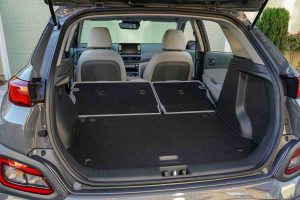
But other than that – in terms of the exterior appearance – the electric and gas-engined versions of this compact crossover are nearly identical.
So also the inside dimensions, particularly as regards both rearseat legroom and cargo room behind the second row as well as total cargo capacity with the second row folded. The latter are 19.2 and 45.8 cubic feet in both cases. This is surprising – as regards the electric Kona – because EV battery packs often take away space that would otherwise be available for things (and legs) but Hyundai has managed to fit the Kona’s electric battery underneath the floorpan without any impingement of space above it.
This means there’s no compromise – of usefulness – that must be made to drive the electric rather than the gas-engined Kona.
Or rather, without all-wheel-drive. The gas-engined Kona offers it. It is not available in the electric version. Front-wheel-drive is actually very effective in all but the heaviest – and deepest – snow.
But AWD is more so.
The Rest
The Kona EV costs a couple thousand bucks more to start than others in the segment like Nissan’s Leaf – even when the latter is ordered with its stronger/optional battery (and longer range). This is because Hyundai kits out the Kona EV with most of the amenities that come standard in the SEL trim of the non-electric Kona, which is available with fewer amenities – and a lower sticker price – in S trim.
Given that one of the barriers – for many people – to owning an EV is how much they cost (which impinges on what they save) it might be helpful if Hyundai offered the electric Kona in a basic trim, at a lower entry price point. 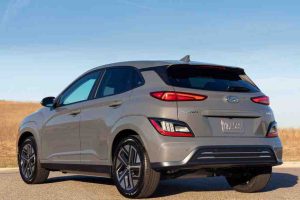
There is also a big price to pay – for the top-of-the-line Limited version of this small crossover – without getting more range as part of the deal. The Limited version of the Kona electric costs twice as much as the base/S trim version of the non-electric Kona. Put another way, you could buy two of the latter for the price of one of the former. Or – put another way – you could save the cost one entire Kona S and put that toward gas.
The Bottom Line
EVs are interesting – and different. Whether those differences are worth the cost is for you to decide.
. . .
Got a question about cars, bikes or anything else? Click on the “ask Eric” link and send ’em in! Or email me directly at EPeters952@yahoo.com if the @!** “ask Eric” button doesn’t work!
If you like what you’ve found here please consider supporting EPautos.
We depend on you to keep the wheels turning!
Our donate button is here.
If you prefer not to use PayPal, our mailing address is:
EPautos
721 Hummingbird Lane SE
Copper Hill, VA 24079
PS: Get an EPautos magnet or sticker or coaster in return for a $20 or more one-time donation or a $10 or more monthly recurring donation. (Please be sure to tell us you want a magnet or sticker or coaster – and also, provide an address, so we know where to mail the thing!)
My eBook about car buying (new and used) is also available for your favorite price – free! Click here. If that fails, email me at EPeters952@yahoo.com and I will send you a copy directly!




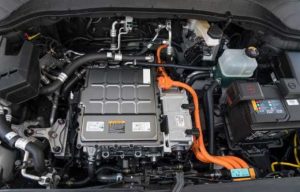
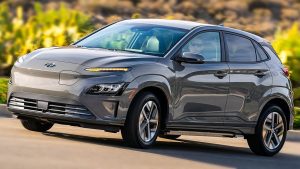
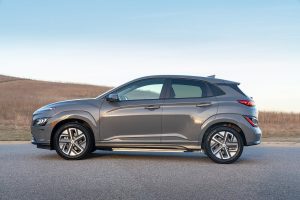
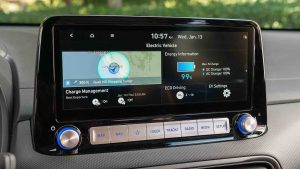







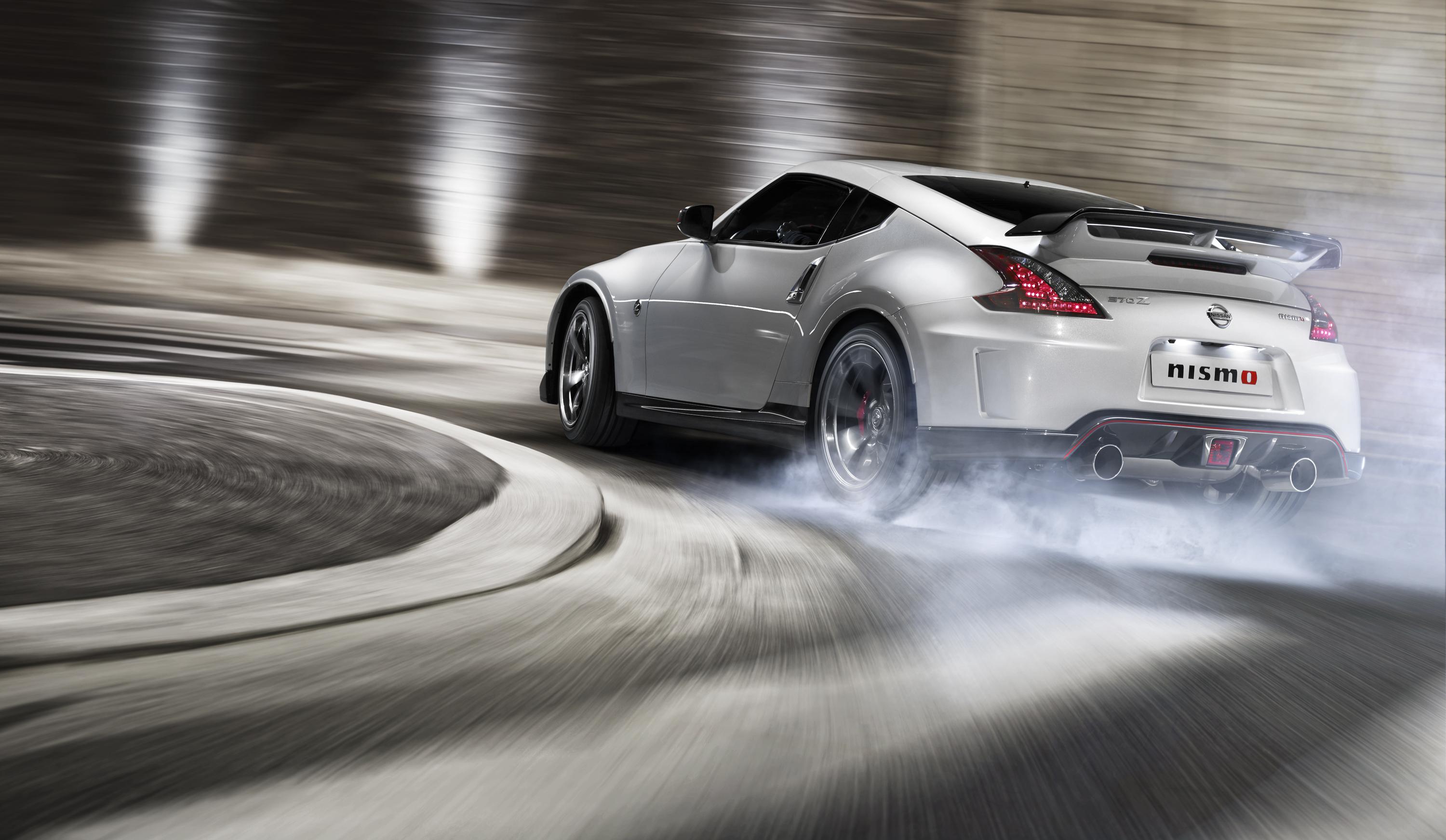
Eric,
Since the vast majority of my driving is local, an EV would suit me. What puts me off is the extra cost and the fire hazard. My garage is not only attached to my house; it’s integral to my house, so if anything catches fire in there, my house goes up too.
I live off-grid. The EV kona wouldn’t just cost me $12k more out the door. It would also cost me a monthly connection fee to the urility. It would cost me my privacy by allowing a right of way and smart spy device into my sanctuary. It would cost me my freedom of mobility by taking away my ability to store several extra tanks worth of gas in cheap jerry cans. EV’s will never replace my gas vehicles. Closest thing that might find its way on the ‘stead is an Ebike or golf cart AFTER I’ve invested in a larger solar array to feed them.
Eric, your comment about hp & torque being available at zero rpm got me thinking.
How will this impact wear on drive line components, particularly those downstream from the motor itself? Will such “sudden impact” reduce the life mounting points, cv joints and other components that are stressed under acceleration?
Disclaimers about your range (mileage) may “vary” means their advertised claims are BULLSHIT.
Hi Doug,
Having driven several EVs, I can affirm that touted ranges are, indeed, bullshit. Maybe if you drive on mostly flat roads at mostly lower speeds in mostly warm (but not hot) weather… but try driving up hills, in summer… or winter… and you’ll quickly see just how far you can go!
I think this thing is ugly and boring at the same time.
What do I get for an extra $12k? not $12k of usefulness, features or value it sounds like.
When we have a direct ICE model to compare against, the EV doesn’t stack up well.
If the price was the same, a case could be made, but the difference shows this is still a technology – like plasma TV’s in their infancy – that the rich need to buy them to allow costs to be recovered and efficiencies to be developed so the rest of us minions have a chance to decide.
At ~$22k OTD the 2018 Kona SE trim (2.0L without awd) is very good for about 90-95% of the driving uses we would need.
MPG average is about 30-34 mpg depending on who is driving. The hatchback is not quite wide enough for 4′ wide piece of plywood.
Even at $5/gallon, 12k buys ~2400 gallons of fuel for ~72k – 81.6k miles. That is about 3.5 to 4 years of driving for us.
Drove that car along east coast from Boston area MA to southern FL. Comfortable to drive 70-80mph with plenty room for carry-on luggage. Basic maintenance is not difficult.
Hi Mith,
Yup. And it’s not just the fact that the money you save – by not buying the electric version – buys gas for years. By the time those years go by, the EV will likely begin to lose the ability to hold charge, which will cost you a new battery.
I acknowledge that EVs have some positive attributes – but “economy” isn’t among them.
Hi Eric
EV highway driving consumption
The advertised range that many manufacturers brag about is the average or city driving figure. However, the highway range is much smaller, sometimes up to 50 percent less.
At WOT the range is 80% less, beware…..
operating Li-ion batteries outside the safety zone (i.e. 20%–80%) state of charge, a loss in conductivity can be observed
You can only use 60% of the advertised range (between the 20% and 80% charge, the useable range), in very cold weather subtract up to 50% more, so what is the real world range? 50% of 60%? = 30%…lol
During the first three months of ownership, EVs were 2.3 times as expensive to service as gasoline-powered cars. At the 12-month mark, repair costs were about 1.6 times what owners of gas-powered cars paid.
It’s Not Parts. It’s Labor
Electric cars depreciate over two times faster than their internal combustion engine counterparts, a serious black mark when it comes to tallying up your actual yearly cost to run your vehicle!
A 1913 Bugatti type 22 is 108 years old and daily driven. A Tesla is scrap after 10 years.
But mechanical systems, like Jay Leno’s 1832 steam engine can last for centuries, get a steam powered car, they run on wood.
Steam powered cars have the same advantage as electric cars, instant torque.
A new steam engine is over 50% efficient, an EV is 25% efficient, if it is very cold out it is 12% efficient.
Howard Hughes’ 1925 Doble E20 went 0 to 75 mph in just 5 seconds, with its engine turning over at less than 1,000 rpm, a steam engine is a very low rpm engine.
The tesla plaid motors runs at up to 19,000 rpm, that sounds dangerous, will wear out quickly, car electric motors are too high rpm. The steam engine goes 600,000 miles without an overhaul. After 100,000 miles the tesla battery is dead so it is worthless, scrapped, at 19,000 rpm the motors are probably gone too..
Howard Hughes’ 1925 Doble E20 top speed was 133 mph in 1925, with today’s technology the steam powered car might be quicker then anything.
The steam engine goes 600,000 miles without an overhaul, this better then most gas ice engines. In a tesla the battery goes in 100,000 miles so in 600,000 miles you go through 6 teslas, a huge waste of resources….
Steam powered vehicle 1500 mile range on 17 gallons of water, they are the king of range better then ice. BEV has a very short range, Mercedes BEV at top speed on highway = 100 miles.
I recall seeing a legacy steam locomotive while on a business trip in San Antonio. It’s boiler was converted to burn oil (usually diesel), and even on that fairly cool December day, you couldn’t stand within 5 feet of it for more than a few seconds before you felt uncomfortably hot. According to the engineer, it was considerably less efficient than a diesel-electric setup, but talk about the ability to pull cars! That peak torque from zero rpms is something else for getting a 60-car train in motion. As I recall the engineer, who’d put in a career with Southern Pacific, said that steam locomotives, even when they were replaced by the diesels, were still used as “helpers” for assisting heavily laden trains in making those climbs through the Rockies, the Wasatch, and the Sierra Nevada ranges, until it became impossible to keep them running anymore.
Locomotive steam engine efficiency was never more than around 10% & the ones still operating require constant maintenance & regular overhaul.
Modern stationary steam engines e.g. turbine power plants are a lot more efficient, but still under 50%…no chance of seeing that in vehicle applications.
I agree, Dan –
It’s why I wish we had a free market. So that EVs that met market needs would be developed as opposed to very expensive EVs being force-fed to a market that cannot absorb them.
The force feeding has a distinct Soviet style 5 or ten year plan feel to it.
https://www.cnbc.com/2022/06/09/biden-announces-standards-for-electric-vehicle-charging-stations.html
I could see a simple, inexpensive EV as a practical second vehicle. It could be used as a commuter.
It would work best in suburban areas where the commute distance is relatively short, and where the owner lives in a house with a garage they can use (or modify) to plug it in at night.
The car has to be small, inexpensive to purchase, and the batteries have to have a vanishingly low fire risk for this to make sense.
It would be great for regular commutes and errands. Not so great for hauling large items or highway trips.
By taking the load of daily use off the other vehicle, the ICE vehicle could potentially last decades longer.
But nooo, we can’t have that.
Publius,
There’s a $10K, Chinese built EV that has 100 mile range and 60 mph top speed that fits the bill. Unfortunately, we don’t get them here.
The hapless sales force in the movie “Glengarry Glen Ross” had a better chance of getting the “golden” leads.
https://www.youtube.com/watch?v=czOpDN8Knr4